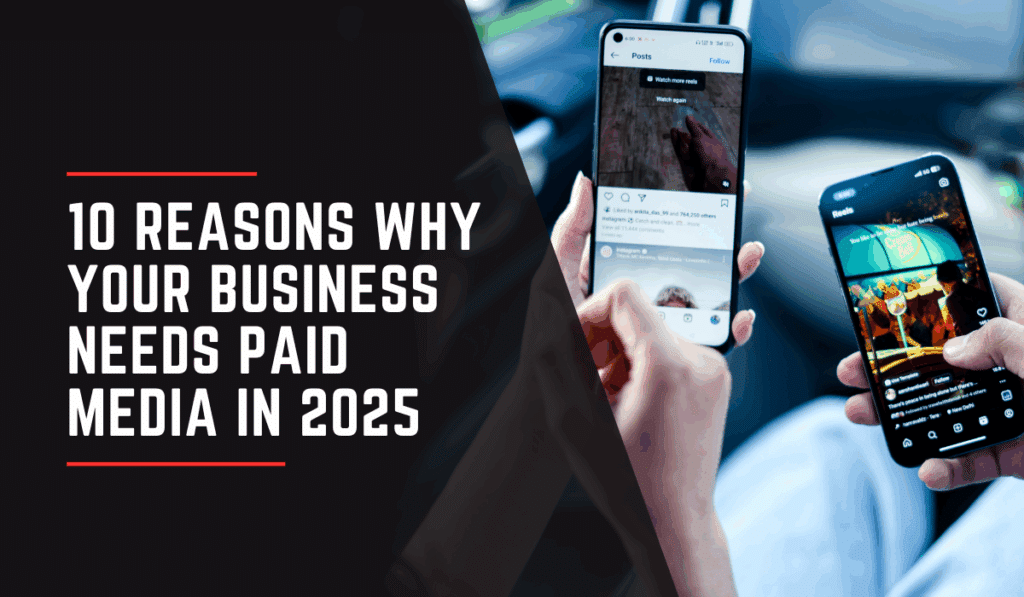The adoption of artificial intelligence and AI-driven technology has changed the way marketers approach search engine optimization and content development strategies. The rise of AI overviews and AI chatbots, such as ChatGPT, leaves many people wondering: Is SEO dead?
No, SEO is not dead. However, GEO is on the rise. GEO stands for generative engine optimization. Because “GEO” is an emerging (and not yet standardized) term, think of it as a complementary practice within your search/content strategy. As AI becomes more popular, marketers will need to find a way to prioritize both strategies to maintain their SERP position. In short, classic SEO remains essential, and GEO builds on top of it.
In this article, we’ll explore the differences between SEO vs. GEO so that you can adapt to the ongoing changes and the future of search.
What is SEO (Search Engine Optimization)?
Search engine optimization (SEO) is the process of optimizing website pages to maximize visibility on the search engine results page (SERP). SEO marketers will use on-site and off-site strategies to help a website maintain or improve its current ranking position. Additionally, technical changes can be implemented to enhance a website’s crawlability and overall user experience. As search experiences evolve (e.g., AI answers, SERP features) and ranking systems change, executing a strategy and making changes over time can help a website maintain its ranking position.
What is GEO (Generative Engine Optimization)?
Generative engine optimization (GEO) is the process of optimizing web content to ensure it’s discoverable by generative AI engines and large language models (LLMs). These strategies focus on content that’s clear, concise, and easy to read. The content structure must be logically sound with proper heading hierarchies and unambiguous claims that are cited to authoritative, up-to-date sources (with dates). Think “retrieval-friendly” content: headings, definitions, and date-stamped citations that are easy for systems to parse.
A GEO marketing strategy helps websites get their content to qualify for inclusion in the Google AI Overviews, Microsoft Copilot, Perplexity, and in-SERP AI summaries. Availability of these surfaces varies by query and over time. GEO and AI summaries are still in their early stages; as these methods of discoverability become more popular, businesses will need to adjust their content strategy to stay relevant in an AI-driven search engine results page.
Is GEO Replacing SEO?
The short answer is no, GEO is not replacing SEO. However, it is changing how web visitors consume information. As these AI overviews become more popular, businesses will need to adapt their content to align with the growing needs of generative AI engines and LLMs. SEO in 2026 and beyond will likely be heavily influenced by GEO marketing, and businesses will need to learn to adapt using AI-focused strategies. Importantly, GEO depends on SEO hygiene (crawlability, internal linking, structured data) because AI systems often learn from and search across the public web.
Key Differences Between SEO vs. GEO
There are several key differences between SEO vs. GEO. The main difference is that SEO focuses on getting content to rank for traditional search queries, while GEO focuses on getting content featured on AI chatbots or other AI-generated overviews. When developing an SEO strategy, you’ll need to take a different approach for formatting, content style, ranking signals, and keyword strategy.
Here’s a quick look at the GEO vs. SEO differences:
| Aspect | SEO | GEO |
|---|---|---|
| Definition | The process of optimizing website pages to maximize visibility on the search engine results page | The process of optimizing content to ensure it’s discoverable by generative AI engines and large language models |
| Content Style | Keyword-optimized, long-form | Clear, concise, and organized |
| Primary Goal | Focuses on traditional search engines | Focuses on AI chatbots, AI overviews, and other AI-driven search engines that provide AI-powered responses |
| Strategies | On-site, off-site, and technical SEO strategies | Easy-to-read summaries, FAQ blocks, structured data, improved formatting |
| KPIs | Impressions, clicks, click-through rate (CTR), engaged sessions, conversions/revenue, visibility/share of voice | Inclusion/citation rate in AI answers, citation share vs. competitors, referral traffic from AI platforms (where available), answer snippet win rate, AI-Generated Visibility Rate (AIGVR*) |
| Discoverability | Click-through from SERPs to the website | Mentioned or cited in an AI-generated summary |
| Focus | Keyword-driven | Entity and relationship-driven (people, products, brands, problems) with clear claims and sources |
How SEO and GEO Work Together
The truth is, you can’t have one without the other. If you want to improve the discoverability of your content and maintain your ranking in the SERPs, you’ll need to prioritize both SEO and GEO. You’ll need to start thinking critically about how both components work together to align with the audience’s needs. Here’s how you can optimize your content for humans and AI:
Entity & Keyword Mapping
One key difference between GEO and SEO is that generative AI models evaluate information found on the web based on a specific entity, rather than keywords used. To ensure both of your strategies are working towards a common goal, map entities (brand, products/services, people, places, problems) and align keyword clusters under each entity. Consider maintaining an “entity glossary” with canonical names, aliases, and schema types.
Once you have a list of keywords you want to target in your SEO strategy, tie them together with a core topic or focus. From there, you can use these keywords to align with user intent and audience questions, which can help your content stand out in AI overviews.
Answer-Ready Sections
Long-form content isn’t the problem—buried answers are. Keep sections short and direct so readers (and AI systems) can extract the point fast. Here’s how to structure each section:
- Use the exact user question as the subhead (H2/H3).
- Answer it in the first 1–3 sentences (aim for ≤75 words).
- If more depth is useful, add 1–2 brief paragraphs or a bulleted list right after the answer.
Formatting
Formatting content into tables, charts, bullet point lists, and FAQ blocks makes content easier to read and digest. AI overviews also prioritize these types of content. Add helpful schema where appropriate (Organization, Article, Service/Product, FAQPage, Author), and include “last updated” dates on pages.
Strengthen E-E-A-T
Google uses E-E-A-T (Experience, Expertise, Authoritativeness, Trustworthiness) as a quality framework rather than a direct ranking factor. To ensure your content aligns with these guidelines, you’ll want to start positioning yourself as an industry leader. A great way to do this is by adding bylines with credentials, organization schema, About/Editorial policy pages, contact details, and transparent outbound citations.
Regularly Refresh Content
You want to ensure all facts, stats, and numbers in your content are updated regularly to maintain relevance. Set a lightweight cadence: review top pages quarterly and update lower-traffic, evergreen content every 6–12 months. Consider implementing a consistent refresh schedule for your blog, resources, and landing page content to ensure nothing is missed.
Get an SEO + GEO Audit
There’s no telling what’s in store for the future of search. While AI continues to grow in popularity, you’ll need to adapt to changes to ensure your content is relevant.
The best way to stay ahead of the trends shaping the future of search is to optimize your content for traditional search engines while also making adjustments that cater to AI. Finding a balance between SEO and GEO will help you adapt and stay relevant in today’s digital age.
Don’t let your competitors outpace you. Request a free SEO + GEO audit today—including current SEO standings, entity & answer coverage analysis, and a prioritized action plan for improving visibility and rankings.





